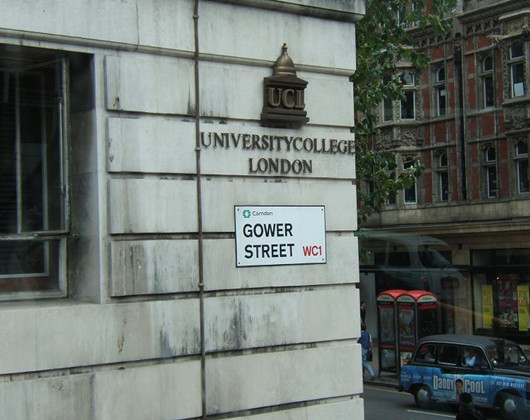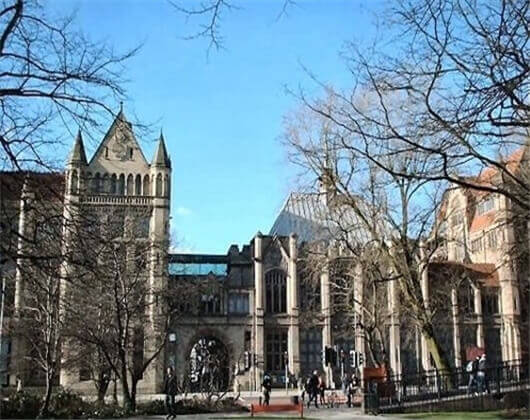Choose a year to see modules for a level of study: First year Core modules: Architectural Design 1 A course of studio based practical architectural design work which aims to: introduce the perception of architecture; introduce issues of cultural and technological significance; generate the interpretation and solution of a series of wide ranging design problems. The technical aspects of the work aims to: develop an understanding of the way building structure, construction and services inform, interpret and contribute to the architectural design process; and provide the opportunity for the demonstration of that understanding as an essential component of practical architectural design. 30 credits Architectural Design 2 A course of studio based practical architectural design work which aims to: widen perception of architecture; introduce issues of cultural and technological significance; generate the interpretation and solution of a series of wide ranging design problems. The technical aspects of the work aims to: develop an understanding of the way building structure, construction and services inform, interpret and contribute to the architectural design process; and provide the opportunity for the demonstration of that understanding as an essential component of practical architectural design 30 credits Communication 1 This module introduces students to the main communication skills used in architecture, including spoken presentation, listening, various graphical techniques, model-making and information technology. 10 credits Communication 2 This module introduces students to the main communication skills used in architecture, including spoken presentation, primary research, various graphical techniques and information technology. 10 credits Environment and Technology 1 This module is the first in a series on building environment and technology. It introduces the constructional and structural principles of small buildings and the ways in which buildings modify the thermal aural and visual environments. 10 credits Environment and Technology 2 A continuation from ARC107, this module describes the constructional and structural principles of small buildings and the way in which buildings modify the sensory environment. 10 credits Humanities 1 The overall aim of this module is to provide you with an understanding of how the field of architecture is positioned in relation to contemporary as much as to past issues. It will provide basic knowledge of particular moments in the recent history of the architecture and will familiarise you with some of its figures, concerns and events. Though the emphasis is on western architecture, it will include and encourage discussion of the way the architecture has been shaped and is being shaped around the world. As an Architectural Humanities module, it will not only focus on the history and theories of architecture but will also emphasise a more interdisciplinary approach that mobilises the knowledge and methods of the humanities. The module will look at ‘situating’ as the way in which the position, voices, agendas of, and issues concerning architecture are expressed and represented. It is a means to invite you to define your personal interest and take on architecture discipline and practice and to develop your own agenda within this wide open-field. This module will contribute to your development as a critical thinker and researcher who can evolve informed and rigorous arguments in both words and images. 10 credits Humanities 2 ARC104 concerns the reciprocal relationship between architecture, the built environment and society, exploring the issues through a broad range of case studies. It will focus on a range of buildings, mainly dwellings. Through a multidisciplinary and cross-cultural approach, cases will include, for instance, vernacular, indigenous and everyday buildings to show how architecture worked when people built for themselves directly without recourse to building specialists and mechanised technology. The course seeks to establish that architecture works through different categorisations, such as style, symbolic references, typologies, use, materiality, meaning, structure, layout, form, but also through the framing of human activities and rituals. The cross-cultural approach prompts the question if there are aspects that remain specific to a local context and if in some cases, some of these can be regarded as universal, or not. 10 credits Second year Core modules: Architectural Design 3 A course of studio based practical architectural design work which builds on the experience of the first year design studio. The scale of projects addressed increases from those encountered in the first year, with more complex briefs. Consideration is given to the issues of sustainability, the relation of buildings to their urban context and the design of outside spaces. The technical aspects of the work aim to further develop an understanding of building structure, construction, materials and services in relation to the overall design concept. 30 credits Architectural Design 4 ARC226 follows on directly from ARC225. Together they form an integrated sequence of projects for the second year design studio course. ARC226 continues the practical architectural design work of ARC225, but concentrates on the design of a medium-sized public building, including the integration of technical and environmental elements. 30 credits Communication 4 ARC202 is a module which introduces analytical and formal architectural drawing, drawing literacy skills and architectural representation at Year 2 level. It aims to consolidate and expand upon the culture of representation introduced in Year 1, to develop technical drawing skills and to broaden knowledge of and ability in graphic presentation. It includes measured and architectural drawing, portfolio presentation and graphical techniques. It is comprised of lectures, workshops and tutorials aimed at groups and individual students. 10 credits Computer Aided Architectural Design An introduction to Computer Aided Architectural Design, including the basic CAD concepts of modelling, drafting, analysis and visualisation/presentation. The module aims to give students familiarity with a range of modelling, rendering and graphics programmes. 10 credits Environment and Technology 3 ARC207 introduces the technology of medium-scale buildings. It comprises three lecture courses: Construction and materials, Architectural Structures (steelwork) and Environmental Design (thermal analysis and systems). 10 credits Environment and Technology 4 A continuation from ARC207, this module describes the technology of medium-scale buildings. It comprises three lecture courses: Construction and materials. Architectural Structures. Environment and Services. 10 credits Humanities 3 This module covers a wide-ranging cultural history of architecture and its relationship between changing states of society, the development of urban culture and institutions, and the growth of knowledge and ideas. The module pivots between scientific knowledge and artistic and cultural development, and is intended to help students from both scientific, social sciences and arts and humanities backgrounds to begin to make connections and understand the context within which architecture is set. 10 credits Humanities 4 ARC 204/254 consolidates the production of architecture through buildings and designs with the production of disciplinary and interdisciplinary knowledge, with a particular overall focus on the contemporary condition. 10 credits Third year Core modules: Architectural Design 5 A course of studio based practical architectural design work which builds on the lessons learnt in the first and second year design studio. The studio based design projects involve schemes of greater complexity than previously, with emphasis placed on the integration of knowledge gained during the three year course. Projects focus on the importance of physical context, introduce a wider range of building types, and require analytical studies relating to urban design, precedents and philosophical approaches. The associated technical studies closely relate to the design projects and are seen as an integral part of the design process. 30 credits Architectural Design 6 A course of studio based practical architectural design work which builds on the lessons learnt in the first and second year design studio. The studio based design projects involve schemes of greater complexity than previously, with emphasis placed on the integration of knowledge gained during the three year course. Projects focus on the importance of physical context, introduce a wider range of building types, and require analytical studies relating to urban design, precedents and philosophical approaches. The associated technical studies closely relate to the design projects and are seen as an integral part of the design process. 30 credits Special Study An in-depth study of one of the following subject areas: architectural theory, architectural history, science and technology, structures, management, CAD, landscape architecture, town planning. The special study is an individual piece of work, allowing students to explore a particular aspect of architecture in some depth. Precise topics will be discussed and agreed with the relevant tutor. In the majority of cases the work takes the form of a dissertation, but it may take other approved forms depending on the nature of the specialist work being undertaken. 20 credits Advanced Structures and Environment The module investigates the technology and environment of buildings, mainly at medium-scale and also introduces the technology of urban-scale environments. It consists of component lecture courses: Sustainability, Lighting, Structures and Acoustics. The emphasis is on the integration of the different aspects of building technology with each other and with architectural and engineering design in its entirety. This includes: environmental impact of specifications, sustainable technologies, infrastructure, structures and aspects of comfort. The module provides knowledge required in level 4 studio work and in architectural practice. 10 credits Environment and Technology 6 This module describes the technology and environment of medium-scale buildings. It is to be taken in association with the studio design module. Acoustics, lighting, environment, services and sustainability are examined in the context of the complete architectural design. 10 credits Humanities 5 ARC 303 is the final module in a sequence of humanities courses over the three years of the architecture degree. ARC 303 specifically focuses on urban history and theory and integrates architecture and related issues with a wider urban context. ARC 303 presents key factors and principles of urban development, historical and contemporary urban design and planning theories and exemplifies these through a series of urban case studies. 10 credits Management Practice Law The module aims to explore and develop a greater understanding of practice in relation to the legal, economic and contractual scenarios. In particular there will be a focus on understanding the political and social and financial factors that affect the practice of architecture. 10 credits
 日本
日本
 韩国
韩国
 英国
英国











